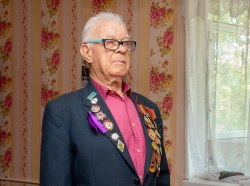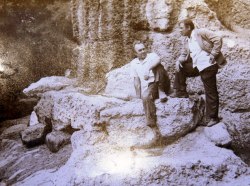Nikolay Sklifosovsky (1836–1904) is an Honored Russian Professor. The scientist was born on March 25 (April 6), 1836, on a Quarantine farm near the city of Dubossary, Kherson province. According to some experts, Nikolay Sklifosovsky`s birthplace had an influence on his further choice of professional and life path. In scientist’s native farm people who returned from places with common infectious diseases were being kept quarantined.
Nikolay Sklifosovsky devoted many research and development to antiseptics (chemical disinfection). He was the first to use local anesthesia with a cocaine solution, made an apparatus to maintain anesthesia, and with its help he performed an uncommon operation - trimming half of the upper jaw.
A thorough analysis of fractures and wounds, which was proposed by the professor, gave him the opportunity to propose a number of important medical and organizational measures.
On Nikolay Sklifosovsky`s birthday, Novosti Pridnestrovya talks about his scientific and practical achievements in the field of medicine.
Field Medicine
Nikolay Sklifosovsky gained great medical experience in the field of military surgery. He took part in the campaigns of the Austro-Prussian War during his internship abroad (1866-1868), during the Franco-Prussian War (1870-1871), during the Balkan War (1876) and the Russo-Turkish War (1877-1878).
Professor considered sorting the wounded to be the most important task before treatment. Nikolay Sklifosovsky proposed his own system of dividing patients into four categories: non-transportable, subject to casting, requiring regular dressing and minimal injured (after one or two days they returned to the front). In the field, the professor treated a large number of people. Sometimes, he did not leave the operating room for weeks during the war.
At the same time, Nikolay Sklifosovsky considered transportation of the wounded on peasant carts along dirt roads extremely harmful. Instead, he was the first to propose the idea of using rail transport to evacuate the wounded.
According to the scientist, it was unacceptable to rally wounded fighters in one place. He explained such conclusions as the inevitable consequences of an infectious outbreak and death of a large number of people. He proposed the use of tents for the wounded placement, who came to the infirmaries after the battles.
Surgery
Nikolay Sklifosovsky performed a series of operations, which later became classic in world surgery for the first time. The professor became a pioneer in the surgical treatment of abdominal hernia, brain hernias, jaw and tongue cancer, stomach, esophagus, larynx cancer and other organs.
The beginning of thyroid surgery development was facilitated by the goiter excision operation, which was performed by Nikolay Sklifosovsky. He was among the first who began to operate on the gall bladder. While opening the bladder with subsequent suturing according to the method of Sklifosovsky remained the main type of operation for stones and organ tumors for a long time.
The unique method of shattered bones splice he developed, which is called Sklifosovsky Lock or the Russian Lock is professor`s outstanding innovation. Thanks to this method, it became possible to treat broken limbs, but not to amputate them, as it had been before.
In addition, Nikolay Sklifosovsky indicated that abdomen opening operations should be performed in rooms with an air temperature of at least 16-17 degrees. When operating at lower temperatures, in his opinion, the likelihood of patient`s death increased significantly.
Antiseptic
Nikolay Sklifosovsky devoted most of his scientific and practical interest to antiseptics. Thanks to him, this important aspect of doctor`s activity in general and the surgeon in the first place was taken seriously.
Before Nikolay Sklifosovsky, they limited themselves to spraying operating room with carbolic acid, which was harmful to people. Used instruments were placed in jars of warm water, while bandages from one patient were reused on another.
The professor introduced antiseptics into practice consistently. Colleagues scoffed at him saying: “Isn’t it funny that such a large man like Sklifosovsky is afraid of such small creations as bacteria which he doesn’t even see!”
But the surgeon did not pay attention to it, first, Nikolay Sklifosovsky introduced the hot treatment of medical linen, dressings and instruments in a device he invented himself with heated air. Then, he obliged to carefully clean the hands of the surgeon and his assistants with anti-bac before the operation, use surgical instruments with nickel and smooth surfaces and change them during the operation.
In addition, gauze, cotton wool, and irrigators (devices for washing cavities and wounds) were used during operations at Sklifosovsky’s behest. The professor ordered dressings to only be done by doctors, while dirty bandages to be burn immediately. So, the disinfection of the operating site and instruments, introduced by Nikolay Sklifosovsky, reduced mortality significantly.
Anna Turchenko








